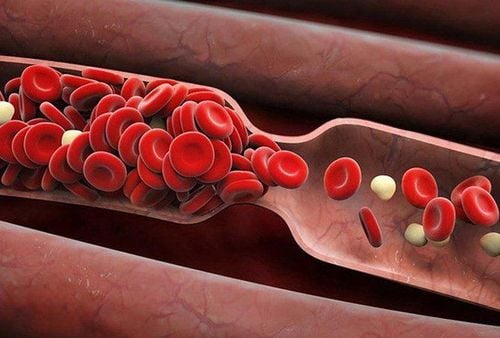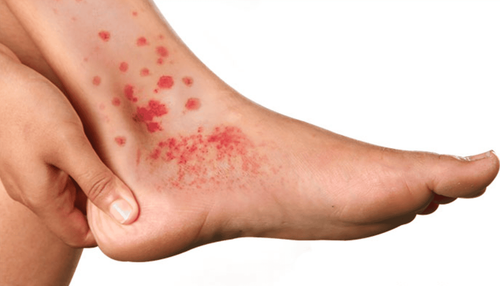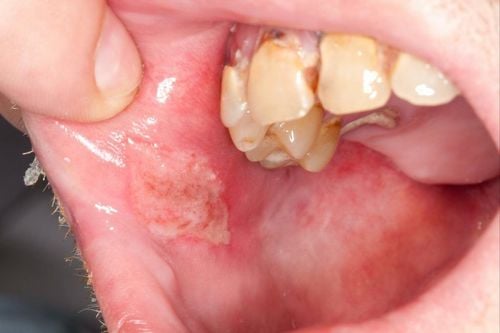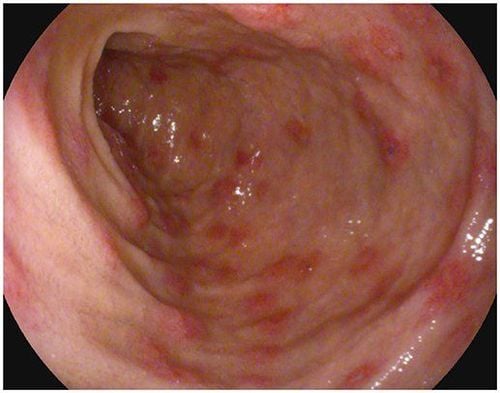This is an automatically translated article.
Vasculitis (Kawasaki) is inflammation in blood vessels caused by changes in blood vessel walls, such as thickening, weakening, narrowing or scarring, resulting in blood flow restriction, organ and tissue damage. There are many types of vasculitis and most of them are rare. The condition can be acute or chronic, so depending on the type it is acquired, it may improve without treatment.1. Types of vasculitis and symptoms
Types of vasculitis :
Behcet's disease Buerger's disease Churg-Strauss syndrome or allergic granulomatous vasculitis Cryoglobulinemia Giant cell arteritis arteritis) Granulomatosis with polyangiitis Henoch-Schonlein purpura (English name Henoch-Schonlein purpura) Kawasaki disease Takayasu's arteritis Signs and symptoms of vasculitis Depending on the type of vasculitis, vasculitis is often associated with decreased blood flow throughout the body. The following are signs and symptoms common to most types of vasculitis:
Fever Headache Fatigue Weight loss Body aches Night sweats Rash Nervous problems, such as numbness or weakness
2. Causes of vasculitis
Currently, doctors have not found the exact cause of vasculitis. Some types are genetic or because the immune system attacks blood vessel cells. Factors that can trigger these immune system responses include:
Infections, such as hepatitis B and hepatitis C Blood cancers Immune system diseases, such as rheumatoid arthritis, lupus erythema and scleroderma Reactions to certain medications Blood vessels are affected by inflammation of the blood vessels or worsening of the inflammation. Inflammation causes the layers of blood vessel walls to thicken, narrowing the lumen of the blood vessel, reducing the blood supply and ultimately leading to a reduction in the amount of oxygen and nutrients vital to tissues and organs. of body.

Mạch máu bị ảnh hưởng do viêm mạch dẫn chảy máu hoặc tình trạng viêm nặng lên
3. Risk factors
Vasculitis can occur in men and women or of any race and at any age. But having certain factors can increase your risk of developing vasculitis:
Smoking Hepatitis B or hepatitis C Having autoimmune diseases, such as rheumatoid arthritis, scleroderma or lupus erythematosus
4. Complications of vasculitis
Complications of vasculitis depend on the type and severity of the disease or the side effects of the medications used to treat vasculitis. Common complications include:
Organ damage. Blood clots and aneurysms. Blood clots can form in a blood vessel, obstructing the flow of blood in the circulation. Rarely, vasculitis causes blood vessels to weaken and bulge, forming a brain aneurysm (aneurysm). Loss of vision or blindness. This is a complication of giant cell arteritis if left untreated. Infection. This includes serious and life-threatening illnesses such as pneumonia and sepsis.

Viêm mạch máu dẫn đến các biến chứng nguy hiểm như cục máu đông, mất thị lực
5. Treatment of vasculitis
Treatment focuses on controlling inflammation with medication and addressing the underlying disease causing the vasculitis. Treatment has two main phases: (1) stopping the inflammation and (2) treating it to prevent recurrence.
Patients in both stages can use prescription drugs. The type and duration of use depends on the type of vasculitis, the organs involved in the inflammation, and the severity.
Medication:
Your doctor may prescribe a corticosteroid medicine, such as prednisone or methylprednisolone (Medrol), to help control inflammation. Side effects of corticosteroids can be serious, especially if used for a long time, including weight gain, risk of diabetes and osteoporosis. If corticosteroids are needed for long-term maintenance treatment, the lowest possible dose is likely to be used.
Other medications may be prescribed along with corticosteroids to control inflammation so the corticosteroid dose can be reduced, such as methotrexate (Trexall), azathioprine (Imuran, Azasan), mycophenolate (Cellcept) or cyclophosphamide .
Biologic therapies such as rituximab (Rituxan) or tocilizumab (Actemra) may also be recommended depending on the type of vasculitis you have.
Surgery:
Sometimes, vasculitis creates a balloon-like bulge in the wall of a blood vessel such as a brain aneurysm. This bulge may require surgery because rupture of the bulge can cause subarachnoid hemorrhage, cerebral hematoma, brain damage, paralysis, coma, or death.
Please dial HOTLINE for more information or register for an appointment HERE. Download MyVinmec app to make appointments faster and to manage your bookings easily.
References: Mayoclinic.org













